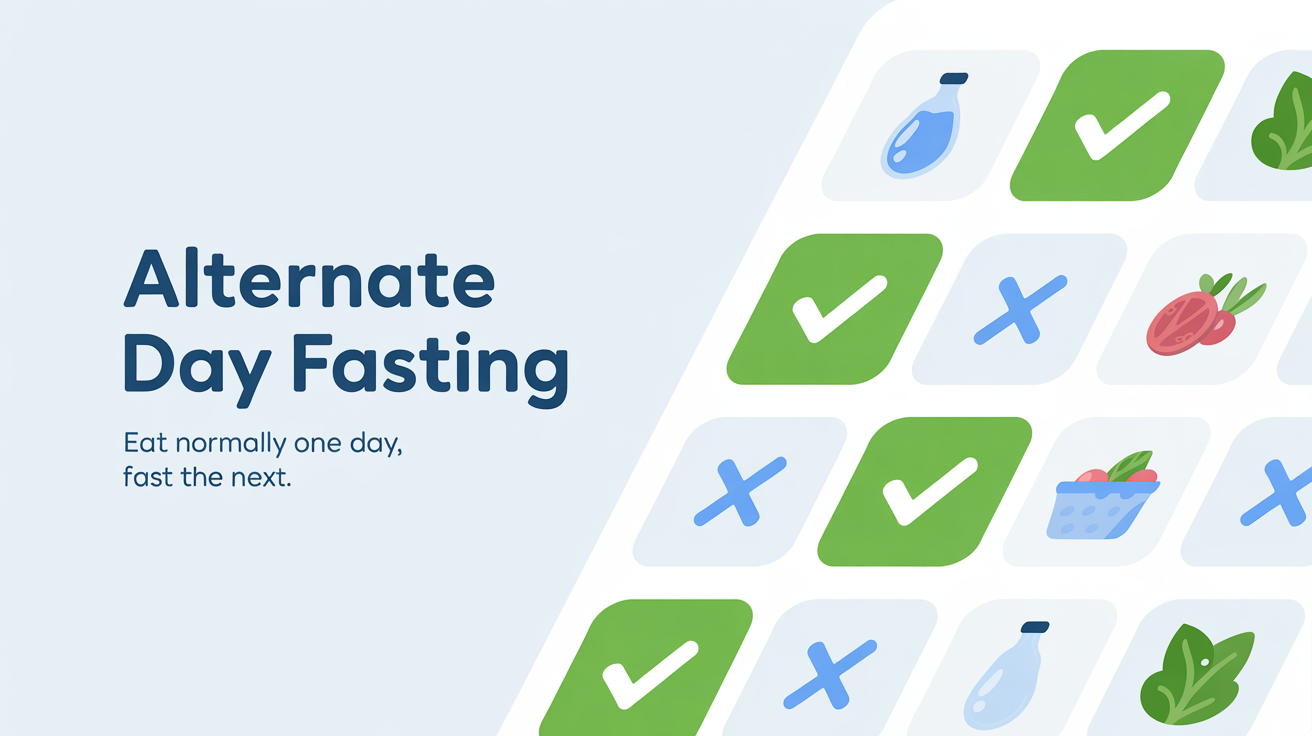Most people come to intermittent fasting (IF) with a goal. Maybe it’s weight loss. Perhaps it’s more energy. Maybe it’s a way to finally feel in control of your body again. But no matter where you start, one thing is true: something shifts not just on the scale, but in your cells, your metabolism, and even your brain.
Let’s walk through what’s going on before and after intermittent fasting. Once you understand the science behind the change, it gets a lot easier to trust the process. And with tools like the Fasting App by Municorn, you don’t have to figure it out alone. You can track your progress, get support, and move forward one simple choice at a time.
Before Fasting: What’s Happening in a Constantly Fed Body
We’re accustomed to eating frequently—breakfast, snack, lunch, snack, dinner, and perhaps a little something after. The body remains in a “fed” state for almost the entire day. And while that sounds harmless, it actually keeps us from burning fat efficiently or repairing damaged cells.
1. Insulin is always on
When we eat, especially carbs or sugar, the pancreas releases insulin. It’s the hormone that helps move glucose out of the blood and into the cells. But when we eat all the time, insulin stays elevated, and that blocks fat-burning. Your body keeps storing rather than tapping into what’s already there.
2. Metabolic rhythms get disrupted
Healthy insulin release works in a rhythm, almost like a heartbeat. But constant eating flattens that pattern. The beta cells in your pancreas can’t reset. Over time, this contributes to insulin resistance, where the body becomes less sensitive to insulin’s signals, and blood sugar creeps higher.
3. Cellular cleanup slows down
Every day, your body collects damaged proteins, worn-out mitochondria, and other cellular “junk.” Typically, the body clears it out through a process called autophagy. But that only happens when you’re not digesting food. So if you’re constantly eating, your cells don’t get the chance to clean house.
Phase 1: The Shift Begins (0–16 Hours of Fasting)

Once you stop eating, your body doesn’t immediately jump into fat-burning. It eases in.
1. Glycogen starts to break down (4–12 hours)
Your liver holds a backup supply of glucose called glycogen. When you’re not eating, your body uses that reserve to keep your blood sugar steady. You may feel a bit hungry or notice a dip in energy as your body switches gears.
2. Insulin drops, fat-burning begins
As glycogen runs low, insulin levels naturally fall. That’s your body’s green light to start breaking down fat for energy. You may not feel this switch happen, but it’s beginning.
Phase 2: The Metabolic Switch (16–36 Hours)
This is where the deeper work begins.
1. Your fuel source changes
Once glucose runs out, your body turns to fat. The liver converts fat into ketones: a wonderful and efficient fuel source, especially for the brain. This is called the “metabolic switch,” and it’s one of the core reasons intermittent fasting works for fat loss and energy.
2. Autophagy kicks in
Around the 16–24 hour mark, autophagy activates. Your cells begin breaking down damaged components and recycling them into usable parts. This process is linked to slower aging, better organ function, and reduced inflammation.
3. Visceral fat starts to shrink
Visceral fat—the deep belly fat that surrounds organs—is especially harmful. Studies show that fasting helps reduce this kind of fat, especially when paired with meal planning or portion awareness. It’s not just about weight, but about your health.
4. Hunger hormones get rebalanced
Eating fewer times a day (like in time-restricted eating) actually helps regulate hunger. One study found that people who ate three meals instead of grazing all day felt fuller and had better blood sugar control. This is part of why fasting can feel easier over time.
The After Phase: What Changes With Intermittent Fasting
You’ve made it through your first few weeks of intermittent fasting. Maybe your clothes are fitting a little differently. Maybe your mind feels a bit clearer. But what’s actually happening under the surface?
Let’s take a look at the proven changes that start unfolding in your body after 1–2 months of consistent intermittent fasting—and how the benefits go far beyond the scale.
The First Two Months: Results You Can Feel (and See)
1. Reduced Weight and BMI

When it comes to real-world results, the data is on your side. In an extensive umbrella review of randomized controlled trials, researchers found that Modified Alternate-Day Fasting (MADF) significantly lowered BMI by 1.20 kg/m² in as little as one to two months. Not only that, but participants also experienced reductions in LDL cholesterol and fasting insulin levels, two key markers of heart and metabolic health.
This isn’t just about achieving a certain number on your bathroom scale. It’s about resetting the way your body handles energy, sugar, and fat so it’s easier to maintain your results over time.
2. A Shift in Lean Mass
As you lose weight, it’s natural to wonder: Am I losing fat or muscle? The truth is, in the early phases of weight loss, some lean mass loss can and may happen. That’s normal. But research shows that combining intermittent fasting with resistance training helps maintain muscle while still promoting fat loss.
It’s one more reason to approach fasting not as a quick fix, but as part of a long-term routine—one that supports strength, not just weight loss.
3. Your Liver Starts Reprogramming Itself
One of the lesser-known benefits of fasting? It helps your liver switch gears.
During fasting, the liver activates a metabolic pathway regulated by PPARα. This increases fat oxidation and kicks off ketogenesis, where your body turns stored fat into ketones—an efficient energy source, especially for your brain.
Another key player, CREB3L3, teams up with non-esterified fatty acids (NEFAs) to make this switch happen. Interestingly, women often show stronger ketone responses, which means they may tap into this fat-burning phase even more efficiently than their male counterparts.
What Happens in the Brain: The Surprising Benefits

We often think of fasting in terms of physical health, but one of the most fascinating transformations happens in your brain.
1. BDNF: Your Brain’s Personal Trainer
Your brain produces a protein called BDNF (Brain-Derived Neurotrophic Factor). It supports neuron growth, helps with memory, and plays a major role in learning as well as emotional regulation. BDNF also has a direct link to metabolism, as it helps regulate hunger and satiety in the brain.
2. During Fasting, BDNF Temporarily Dips
In one 4-week intermittent fasting study, researchers discovered that BDNF levels dropped slightly during the fasting window, especially for healthy individuals. But that drop wasn’t a bad thing. In fact, it was correlated with lower inflammation, particularly TNF-α, a key marker for cellular stress.
Think of it like a brain reset. During fasting, your brain transitions into a quiet, restorative mode. Then, it’s focused on trimming back excess signals, conserving energy, and preparing for the rebound.
3. After Fasting, BDNF Rebounds
Once the fasting period ends and you begin eating normally, BDNF levels often bounce back stronger than they were before. This suggests improved brain resilience, better neuroplasticity, and even a protective effect against age-related decline.
In other words, you’re not just getting leaner. You may also be getting sharper.
A Cellular Deep Dive: How Your Body Cleans Itself
Beyond the visible changes, fasting sets off a robust internal process: cellular repair.
1. Autophagy: Your Body’s Self-Cleaning Mode
Think of autophagy as your body’s natural recycling system. When food is limited, your cells shift from “growth mode” into “repair mode,” breaking down damaged parts and reusing them to build new, healthier components.
Fasting helps boost autophagy, clearing out damaged mitochondria, proteins, and waste. This not only improves liver and muscle health but is also tied to increased longevity.
2. The MitoCat–MitoOx Rhythm
Fasting also restores the natural oscillation of insulin release—a rhythm that gets disrupted when we’re eating all day long.
Scientists have discovered a two-phase cycle in our cells: MitoCat (a silent, glycolysis-based phase) and MitoOx (an active, mitochondrial phase). When this rhythm is intact, your body can secrete insulin in pulses, keeping blood sugar balanced. Fasting helps re-establish this rhythm by giving your pancreas the time it needs to rest.
So instead of being stuck in an “always on” mode, your body learns how to respond with precision again.
After IF: The Long-Term Payoffs
After weeks—or months—of consistent intermittent fasting, your body has adapted and it’s thriving!
1. Insulin Sensitivity Improves
With time, fasting helps the body become more insulin sensitive, meaning your cells respond to insulin more efficiently. This allows for better blood sugar regulation, less fat storage, and a lower risk of metabolic disorders like prediabetes or type 2 diabetes.
2. Hormones Rebalance
Fasting may also support hormone balance due to the following major changes:
- Ghrelin, the hunger hormone, tends to stabilize, reducing unnecessary cravings.
- Leptin, the satiety hormone, becomes more effective, helping your brain recognize fullness.
- Cortisol, the stress hormone, often normalizes with consistent fasting and sound sleep.
Together, these shifts support a calmer, more sustainable relationship with food.
3. Your Body Learns to Listen
When you give your body a rhythm again—periods of fasting followed by intentional eating—it starts to recognize and respond to real hunger signals. Cellular pathways related to oxidative stress and nutrient sensing (like NADPH and ROS cycles) become more efficient, reducing damage and enhancing energy.
Tips for a Successful “Before and After” IF Journey

Intermittent fasting is simple. Unfortunately, that doesn’t mean it’s always easy. That’s why you need a few practical strategies in place before and after your fast so you can help your body adjust and ensure you stick with it.
Before You Begin:
- Start slow, then build. Begin with shorter fasts like 12:12 (12 hours fasting, 12 hours eating) or 14:10. Let your body ease into this new rhythm without diving in head first.
- Fuel wisely. Focus on whole, nutrient-dense meals during your eating window. Make sure you eat plenty of fiber, healthy fats, and protein to help your body stabilize blood sugar and reduce cravings during the day.
- Stay hydrated. Drink water throughout your fast, and consider adding a pinch of sea salt or sipping herbal teas to support electrolyte balance.
The key to success? Track your patterns and build habits that will stick. That’s where the Fasting App by Municorn can really shine. It offers real-time support, flexible fasting plans, and a progress dashboard to help you stay on course. Even on the hard days!
After You Fast:
- Break the fast gently. Your body has been resting. Don’t overwhelm it. Start with light, easy-to-digest foods, like broth, eggs, smoothies, or a handful of berries and nuts are great options.
- Avoid “reward eating.” It’s tempting to go all-in on a big meal, but that can spike insulin and undo some of the benefits. Think nourishing, not indulgent.
- Pay attention to your wins. Better sleep? Clearer thinking? A calmer appetite? These subtle shifts are signs your body is resetting from the inside out. Write them down. Let them fuel your motivation.
Intermittent Fasting Is a Biological Reset
When you give your body space to recalibrate, it responds. Blood sugar levels begin to stabilize. Hunger cues settle. Sleep becomes more restful. Focus sharpens. You start to feel more present in your own body, without forcing anything.
That’s the quiet power of intermittent fasting.
It works by creating rhythm: periods of nourishment followed by rest. Over time, this rhythm supports deeper metabolic health, steadier energy, and clearer hormonal signals.
Not every change is immediate. Some start small at the cellular level. But they matter. These shifts are what pave the way for long-term balance, not just short-term results.
The Fasting App is designed to support that process. It helps you stay consistent, track patterns, and recognize progress you might otherwise miss. Because fasting isn’t just about what you’re skipping, it’s about everything you’re gaining.
This is a reset. One that honors how your body was made to function. Let the process unfold—and let the support help you stay with it.




